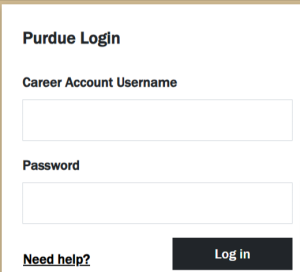If you are looking for Push Patient Portal Login? then you are landing at the right place at.
Patients can easily share their health history with their doctors and receive feedback through the Patient Portal. In today’s digital age, it is essential to have quick and safe access to one’s medical records, test results, prescription information, and direct connection with one’s healthcare providers. An overview of the Patient Portal registration, login, and navigation processes is provided in this article. A patient’s ability to communicate with their healthcare providers, schedule appointments, and view their medical records is all boosted by their familiarity with the Patient Portal.
Push Patient Portal Login
Sure! Here’s a short, step-by-step guide for logging in to a Push patient portal:
- Visit the patient portal website.
- Click on the “Login” or “Sign In” button.
- Enter your username or email address.
- Enter your password.

- If available, complete the two-factor authentication process.
- Review and accept any terms or policies if prompted.
- Click on the “Login” or “Sign In” button.
- Explore the features and information available in your patient portal.
- Remember to log out when you are finished.
By following these simple steps, you can securely access your patient portal and make the most of its features for managing your healthcare.
Push Patient Portal Login Forgot Password
Certainly! Here’s a short, step-by-step guide on what to do if you forget your password for a patient portal:
- Visit the patient portal login page.
- Look for the “Forgot Password” or “Reset Password” link.
- Click on the “Forgot Password” or “Reset Password” link.
- Provide your username or email address associated with your account.
- Submit the request for a password reset.
- Check your email for a message from the patient portal system.
- Open the email and follow the instructions provided.
- Set a new password for your patient portal account.
- Return to the patient portal login page.
- Enter your username or email address and the new password.
- Click on the “Login” or “Sign In” button to access your account.
By following these steps, you can easily recover your forgotten password and regain access to your patient portal account.
Push Patient Portal Login FAQ
Certainly! Here are some frequently asked questions (FAQs) related to patient portal login:
Q1: What is a patient portal?
A patient portal is a secure online platform provided by healthcare providers or hospitals that allows patients to access their personal health information, communicate with healthcare professionals, schedule appointments, view test results, and manage their healthcare.
Q2: Why should I use a patient portal?
Patient portals offer several benefits, including convenient access to medical information, the ability to communicate securely with healthcare providers, online appointment scheduling, prescription refills, access to educational resources, and the ability to update personal information.
Q3: How do I sign up for a patient portal?
A: The process for signing up for a patient portal varies depending on the healthcare provider. Typically, you will need to visit the provider’s website and look for a registration or enrollment section. Follow the instructions provided, which may include providing personal information and verifying your identity.
Q4: What are the login credentials for a patient portal?
A: The login credentials for a patient portal usually consist of a username (or email address) and a password. You can either receive these credentials during the registration process or create them yourself during the initial setup.
Q5: What if I forget my password or username?
A: Most patient portals have a “Forgot Password” or “Forgot Username” option on the login page. By clicking on this option, you can initiate the password or username recovery process. Typically, you will need to provide your registered email address or answer security questions to recover your credentials.
Q6: How can I ensure the security of my patient portal login?
To enhance the security of your patient portal login,
- Choose a strong and unique password.
- Enable two-factor authentication if available.
- Avoid sharing your login credentials with anyone.
- Keep your devices and software up to date.
- Use secure networks and avoid public Wi-Fi for logging in.
Q7: Can I access the patient portal from my mobile device?
Many patient portals have mobile applications or mobile-friendly versions of their websites. You can typically download the mobile app from your device’s app store or access the portal through a web browser on your mobile device.
Q8: What should I do if I am unable to log in to the patient portal?
If you are experiencing issues logging in, refer to the portal’s support documentation for troubleshooting steps. You can also contact the provider’s technical support for assistance.
Remember, the specific features and functionality of patient portals may vary depending on the healthcare provider. It’s always best to refer to the instructions and guidelines provided by your specific provider for accurate information on their patient portal login process.
Conclusion
In conclusion, patient portals have rapidly grown in importance in the realm of contemporary healthcare since they facilitate patient-provider communication and allow people to take charge of their own healthcare. Logging in is a mandatory safety measure before making use of these perks. Patients can access their patient portals, reset passwords, and learn more about the capabilities available to them by following the instructions in this tutorial. If you want your patient portal to be effective and safe, you need to make password security a top priority and stick to industry standards. Using the patient portal login process encourages patients to be more involved in their healthcare and increases their ability to communicate and interact with their doctors.